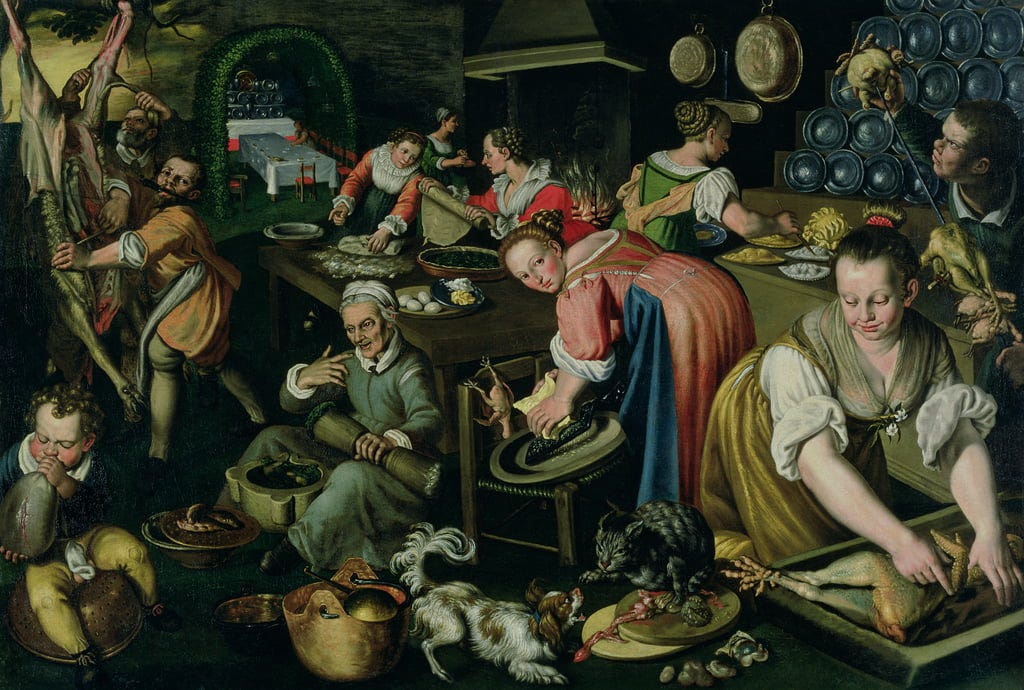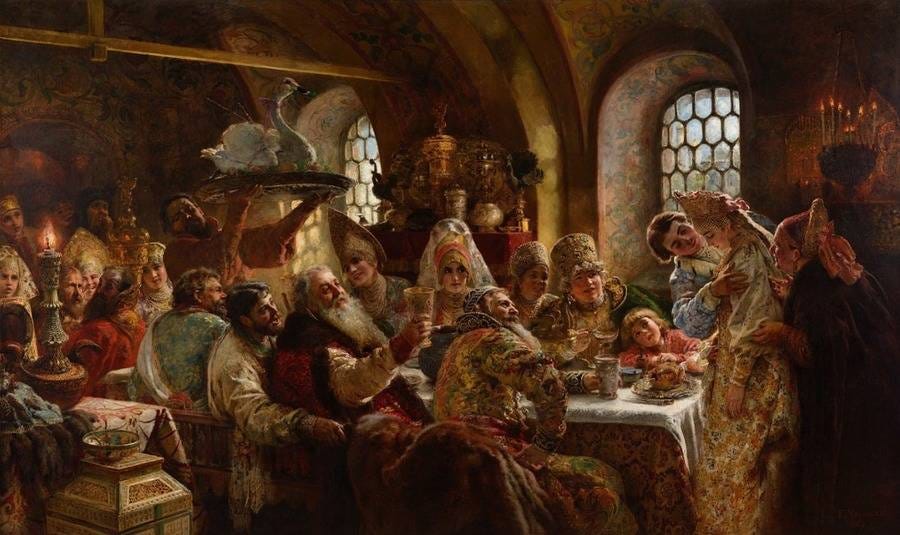January 23 is National Pie Day and to celebrate here’s a special Trading Places edition of my newsletter with a history of medieval pie from author Pat Willard. I first learned of Pat through her book, Pie Every Day (1997) which has a place of honor on my book shelf. When she contacted me about a pie article she was writing several years ago I was as excited as any pie fan-girl could be and since then we have become good friends. It is she who gave me a big you-can-do-this nudge when I was navigating my way through the ins and outs of creating a Substack newsletter. Thank you, Pat and Happy Pie Day to all! ~ Kate
A Brief History of Medieval Pie
by Pat Willard
There are several responses when coming upon an old recipe. Those of recent history, say, in the last 100 years or so, are for the most part recognizable but may seem quaintly strange in the list of ingredients. Venture further into the early 19th century and keep on into antiquity, and specific skill are required. The first is to decipher idiosyncratic spelling and to translate measurements, which are oftentimes not given at all. The second and hardest is to figure out modern substitutions for unfamiliar ingredients, such as isinglass (a fish’s air bladder), whortleberries (blueberries), and arrack (any 100%+ liquor you happen to have on hand).
The real fun begins in the 16th century, where it helps to acquire some sense of history. Take, for instance, the Middle Ages. Coming out of the chaos of the Dark Ages, it was a time when the quality of life greatly improved. An increase in literacy accounts for the proliferation of cookbooks and recipes tucked into the royalty and nobles’ household accounts. New farming techniques expanded crop yields. Kitchen and herb gardens and orchards became popular even with peasants, eventually benefiting them when nobles allowed them to own little spits of land. And just about everyone foraged, hunted, and fished in surrounding forests. All of this led to diets becoming more varied and nutritious for the rich and poor alike.
It’s easy, then, to imagine medieval dishes as simple and fresh in the manner of a modern farm-to-table except for the overwhelming influence of endless wars in foreign countries, the Holy Land Crusades, Arab invasions into Southern Europe, particularly Spain, and the formation of Far East trade routes. Each injected unique and vibrant flavors through the introduction of spices. Only the wealthy could afford them—in fact, it was a crime for peasants to be found in possession of even a thread of saffron or a single nutmeg. No matter the expense, noble and royal kitchens used them liberally as a means to broadcast wealth and power and led to the creation of elegant and sophisticated dishes.
The first medieval recipe I ever read was from Le Viandier by Taillevent, who cooked for all the reigning French kings from 1326, when he was 16, to 1395, when he died at 85 and still held the position of royal chef. The recipe was Cigne Resvestu, which involved skinning a whole swan and then glazing its flesh with saffron before roasting it over a spit. Once cooked, the body was stuffed back into its skin, the poor bird’s head propped straight up or (and probably easier) tucked under a wing as if it was asleep. The final touch was to coat the feathers and head with a paste made of egg yolks mixed with more saffron and honey—a golden swan presented to the king on a large platter. A very small part of me thought about trying it, if only I could get over the swan part and the expense of what would probably be at least a couple hundred dollars in saffron.
Pies were essential to every class of people. Known as coffins, their thick inedible crust acted as an oven-proof crockery that, upon serving, needed a good whack to open. Peasants favored them to stretch and preserve leftovers, their recipes often including a couple of hardboiled eggs from their flocks to make them more substantial. In their never-ending search for one-upmanship ostentations, the upper class considered pies as an additional way to announce their wealth. They encased all manner of freshly killed game, fish, and fowl, commonly mixed with fruit from their newly imported orchard trees, apricots and dates being the most favored, and the whole concoction heavily spice laden. For amusement, the top and bottom crusts would be cooked separately and then, when it was time to serve, the top was removed to release a flock of pretty birds, rabbits, turtles, or frogs—anything at all—for a lively surprise. One of the most extravagant pie amusements occurred at the Feast of the Pheasant held at the court of Philip the Good, Duke of Burgundy in 1454. Out from an enormous pie popped 24 musicians playing their instruments for the dancing lords and ladies.
The Tartes of Flesh recipe that Kate bakes is taken from the 14th-century cookbook The Forme of Cury. She remains faithful to the original recipe, except for the crust being infinitely more delectable and the title change to the appealing, “Small Birds in a Pie.” One regret may be that it does not contain frisky birds, but its rich flavors ensure it’s a dish worthy of recreating.
Pat Willard has written four books: Pie Every Day, a memoir, chosen among the top ten cookbooks by Atlantic Monthly, and Bon Appetit; A Soothing Broth; Secrets of Saffron, The Vagabond Life of the World’s Most Seductive Spice, short-listed by the International Association of Culinary Professionals for Best Literary Cookbook; and America Eats!,On the Road with the WPA: The Fish Fries, Box Supper Socials, and Chittlin' Feasts that Define Real American Food, based on material written in the 1930s by the WPA’s Federal Writers Project. Most days you can find her buried under books and trying to write the latest story for her Substack newsletter, America Eats!







What a great bit of history!
Fascinating!!